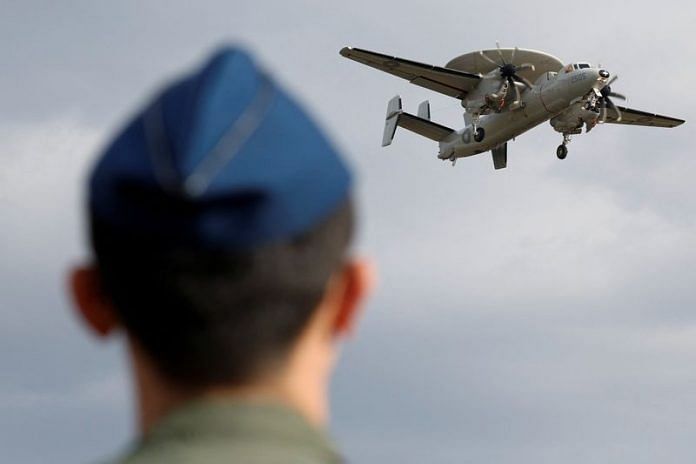By Fabian Hamacher
PINGTUNG, Taiwan (Reuters) – Taiwan’s air force showed off its armed-to-the-teeth submarine hunters and early warning and control aircraft on Tuesday, demonstrating how it keeps watch on the skies and waters around the Chinese-claimed island.
China, which views Taiwan as its own territory, has over the past four years regularly sent warplanes and warships into the skies and waters around the island as it seeks to assert sovereignty claims that the government in Taipei rejects.
Taiwan’s air force, dwarfed by China’s but well-armed with mostly U.S. equipment, has been at the front lines of responding to these missions and regularly scrambles to shadow and warn away Chinese aircraft and ships.
On a defence ministry-organised media visit to the Pingtung air base in southern Taiwan, the air force displayed its Lockheed Martin P-3C Orion anti-submarine aircraft and Northrop Grumman-built E-2K Hawkeye early warning and control aircraft.
Crews demonstrated attaching missiles under the wing of an Orion, which can be armed with torpedoes, depth charges and U.S.-made Maverick air-to-ground missiles and Harpoon anti-ship missiles.
“We uphold the concept of integrating training for war under the guidance of the defence ministry. We are doing very solid training, which is enough to cope with various situations,” said training officer Tsai Tsung-yu.
Taiwan operates 12 Orions, which the U.S. government approved the sale of in 2007 for almost $2 billion. The first aircraft, surplus U.S. Navy stock, entered service with Taiwan in 2013 and can stay airborne for up to 12 hours.
The air force also conducted flybys with one of their E-2K Hawkeye aircraft. Taiwan has six of the planes, but one was damaged in 2022 during a landing accident and is still being repaired.
They have long-range detection abilities, allowing them to direct intercepts from the air and track low-altitude targets flying below the range of ground-based radars.
Their Pingtung base gives the aircraft easy access not only to the Taiwan Strait but also to the Bashi Channel.
That strategic waterway separates Taiwan from the Philippines and connects the South China Sea with the Pacific. Taiwan has reported Chinese warships and warplanes frequently passing through the Bashi Channel.
(Reporting by Fabian Hamacher; Writing by Ben Blanchard, Editing by William Maclean)
Disclaimer: This report is auto generated from the Reuters news service. ThePrint holds no responsibilty for its content.



